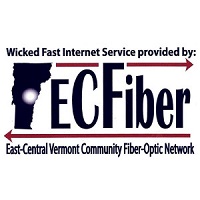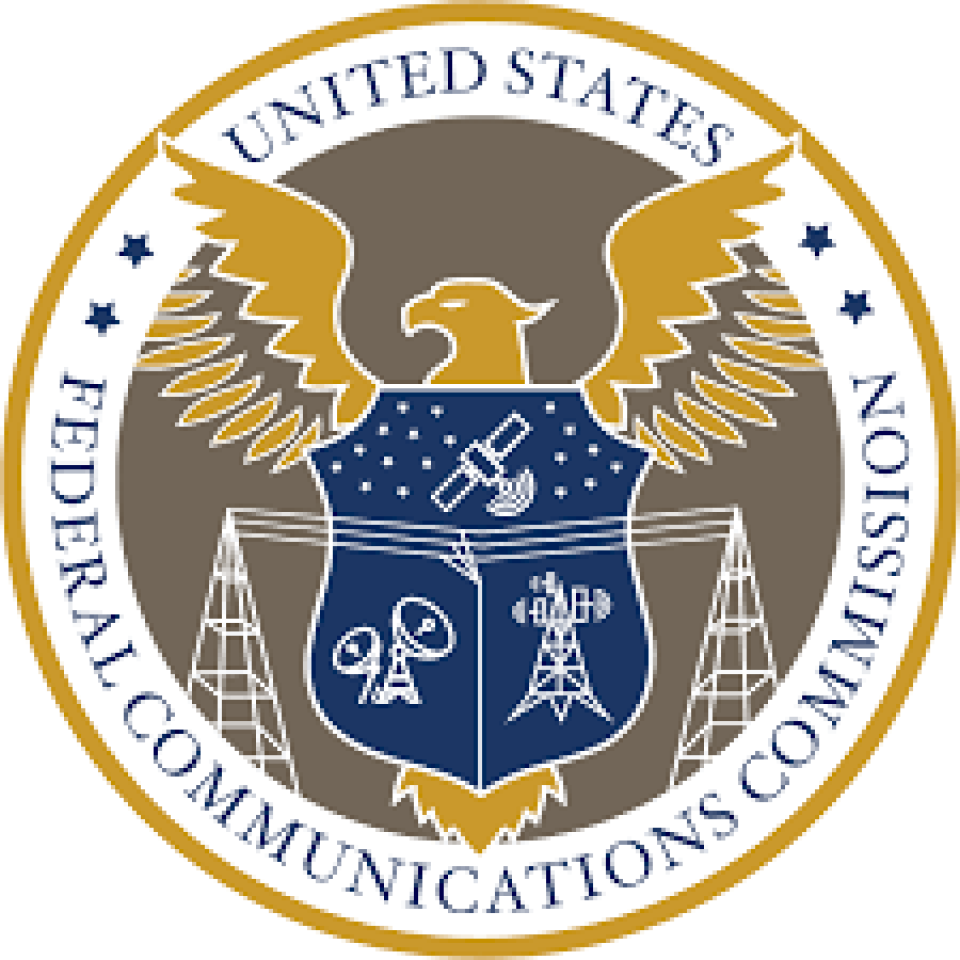
Fast, affordable Internet access for all.


This week on the podcast, Christopher is joined by Christine Parker (Senior GIS Analyst at ILSR), and Meghan Grabill (Geospatial Analyst at the Maine Connectivity Authority) to talk about the recently announced NTIA location challenge process for the upcoming BEAD program. They talk about the handful of states that have been moving fast and already submitted (or will soon) their initial proposals, including Virginia and Louisiana and Maine, before tackling the recently released challenge process. Meghan and Christine run through the process by which states are allowed to set up different criteria for eligible BEAD locations, including everything from adjusting eligible technologies to location types, and how households can submit data and challenges.
Worthwhile revisions we like to see in the process include some shifting of the burden of proof to the IPSs (the largest one which have a long history of over-reporting service territory), the allowance of more flexible speed test data, and the ability to add community anchor institutions to grant-eligible maps.
This show is 36 minutes long and can be played on this page or via Apple Podcasts or the tool of your choice using this feed.
Transcript below.
We want your feedback and suggestions for the show-please e-mail us or leave a comment below.
Listen to other episodes here or view all episodes in our index. See other podcasts from the Institute for Local Self-Reliance here.
Thanks to Arne Huseby for the music. The song is Warm Duck Shuffle and is licensed under a Creative Commons Attribution (3.0) license.
It was a big week for ECFiber as Vermont’s first – and oldest – Communication Union District (CUD) celebrated lighting up the last hub of its 1,500 mile-network in White River Junction.
To mark the occasion of connecting the “golden patch cord” that will extend high-speed Internet service to eight more communities in the Upper Valley region, White River Junction’s VFW Hall was packed this past Tuesday with CUD officials, local and state leaders, enthusiastic residents, and U.S. Sen. Peter Welch. They were there to celebrate what ECFiber officials liken to “the Golden Spike moment tying the first transcontinental railroad together.”

After a 30-piece band played marching tunes, ECFiber Chairman F.X. Flinn marched to the podium to describe the meaning of the moment.
"It’s come to fruition today with a lighting of the White River Junction hub," he said. "This is the last piece of the puzzle for the network we originally envisioned that would bring world-class broadband to every home and business in the 23 member towns that originally voted town meeting day 2008 to create ECFiber."
Sen. Welch, an ECFiber subscriber who also spoke at the event, credited the state’s community broadband approach as the linchpin to solving the state’s digital divide:
“If we in rural Vermont were going to depend on the big telecommunication companies to wire our homes and get us Internet, we’d be waiting until our grandchildren had grandchildren. It wasn’t going to happen.”
Eight More Towns Join CUD
Today, the National Telecommunications and Information Administration (NTIA) announced how it will allocate $42.5 billion in BEAD funds to all 50 states, the District of Columbia, and five territories.
At an “Investing in America” event today at the White House, President Biden noted that this “biggest investment in high-speed Internet ever” was noteworthy “because for today’s economy to work for everyone, Internet access is just as important as electricity was, or water or other basic services.”
And in a press statement, Assistant Secretary of Commerce for Communication and Information Alan Davidson, who is overseeing the NTIA program, added: “This is a watershed moment for millions of people across America who lack access to a high-speed Internet connection. Access to Internet service is necessary for work, education, healthcare, and more. States can now plan their Internet access grant programs with confidence and engage with communities to ensure this money is spent where it is most needed.”
Our initial reaction is as follows:
"The BEAD allocations amount to the largest ever single federal investment to deploy needed Internet infrastructure across the United States. The question now is: how many states will maximize the moment and be inclusive of municipal broadband, public-private partnerships, and community-driven initiatives vs. those states who will simply dole out the funds to the big monopoly providers and hope for the best?”
Concerns are mounting that over $2.8 billion in potential broadband grants doled out by the Federal Communications Commission’s (FCC) Rural Digital Opportunity Fund (RDOF) could be wasted, further eroding the already well-criticized program’s disjointed effort to expand broadband access across rural America.
In 2019, the Ajit Pai FCC created the $20.4 billion RDOF with an eye on shoring up affordable broadband access in traditionally unserved rural U.S. markets. The money was to be doled out via reverse auction in several phases, with winners often declared based on having the maximum impact for minimum projected cost.
During phase one of the program, the FCC stated that 180 bidders won $9.2 billion over 10 years to provide broadband to 5.2 million locations across 49 states and the Commonwealth of the Northern Mariana Islands. But of the $9.2 billion in winners, over $2.8 billion has gone into default, meaning the bidder couldn’t actually deliver on promised projects.
We've tracked the RDOF awards since the auction concluded, including for the providers that defaulted on their wins.
These issues have not only imperiled RDOF program funding, but have thrown a wrench in the works of numerous additional government efforts to shore up broadband access, from the FCC’s long-criticized quest to accurately map U.S. broadband access, to the implementation of newer grant programs overseen by other agencies.
The NTIA (National Telecommunications and Information Administration) insists that the 17 state laws that hamper nationwide community broadband deployments won’t delay a massive looming infusion of infrastructure broadband subsidies. But one industry group isn’t so sure.
BroadbandNow, a website dedicated to tracking the U.S. broadband industry, issued a report claiming that state restrictions on community broadband networks could delay the delivery of more than $42.45 billion in BEAD (Broadband Equity, Access and Deployment) grants made possible by the recently-passed Infrastructure Investment and Jobs Act (IIJA).
Such bills, often ghost written by the telecom industry by policy and lobbying intermediaries, often limit the construction or financing of community broadband networks, even in unserved areas that regional telecom monopolies have long neglected.
Covid’s home education and telecommuting boom highlighted the restrictive and often counterproductive nature of such bills, leading two states — Arkansas and Washington — to remove the barriers. And in Colorado earlier this month, Gov. Jared Polis signed Senate Bill 23-183 into law that eliminates an older 2005 law backed by regional telecom monopolies, which imposed cumbersome and onerous restrictions on Colorado towns and cities looking to build better, more affordable community-owned and operated broadband networks.
Representing 26 towns across Massachusetts, from Cape Cod to Chelsea, an informal group of mostly town officials have formed the Massachusetts Broadband Coalition in search of a way out of a broken broadband market to ensure everyone in their individual communities has access to high-speed Internet.
The newly-formed coalition has recently started to meet monthly to share information about what kind of alternatives there might be, or could be, to the big cable monopoly provider in their towns.
Questioning Monopoly Rules Without Reinventing the Wheel
The coalition, which held its first meeting in January, was convened by Robert Espindola, Fairhaven Selectmen and the board’s liaison to the town’s broadband study committee. And though the coalition is “in its infant stages,” as Espindola recently shared with ILSR, one common theme has emerged from each participating member.
“No doubt the common theme is: there’s no competition,” he said. “That’s how it started in Fairhaven for us. When we were negotiating our (franchise) agreement with Comcast, people in the community were asking: ‘why can’t we get competition?’”
When we first came together it was really more just to learn from each other, what each community was doing. And we wanted to see if we could find ways to work more efficiently and not reinvent the wheel.
Indeed, communities across the nation have set out to tackle local connectivity challenges head-on with a community broadband approach without having to reinvent the wheel. Some have built, or are building locally-controlled, publicly-owned open-access fiber networks to create the conditions for competition. Other cities and towns are building, maintaining, and operating their own successful municipal broadband networks. While still others have opted to enter into a public-private partnership with an independent ISP to build out a community-wide network.
Public-Private Partnerships Come into Focus

Join us live on Friday, January 19th, at 2:00pm ET for the latest episode of the Connect This! Show. Co-hosts Christopher Mitchell (ILSR) and Travis Carter (USI Fiber) will be joined by regular guests Kim McKinley (UTOPIA Fiber) and Doug Dawson (CCG Consulting) and special guests Shayna Englin (California Community Foundation) and Geoff Wiggin to talk about the January 13th location challenge deadline, what's going on in LA County and with the California Public Utilities Commission, and what it's like to buy a house in Ohio and find yourself stuck in the middle of the area's Internet service providers.
Email us at broadband@muninetworks.org with feedback and ideas for the show.
Subscribe to the show using this feed or find it on the Connect This! page, and watch on LinkedIn, on YouTube Live, on Facebook live, or below.
Last Friday was a major milestone in the process of moving $42.5 billion from the federal government to states to distribute mostly to rural areas to build new, modern Internet access networks. January 13th marked the deadline for error corrections (called challenges) to the official national map that will be used to determine how much each state will get.
As an organization that has worked in nearly all 50 states over the past 20 years on policies to improve Internet access, we spent the last few weeks struggling to understand what was actually at stake and wondering if we were alone in being confused about the process. Despite the stakes, almost no expert we talked to actually understood which challenges – if any – would fix errors in the map data before it was used to allocate the largest single federal broadband investment in history.
Update: On January 13th, Joan Engebretson confirmed in Telecompetitor that the location challenges deadline was October 30, 2022, and not Jan 13, 2023.

This article will explore what is going wrong with the distribution of that $42.5 billion, the mapping process, and continued failure of the Federal Communications Commission (FCC) to show competence in the broadband arena. And it offers ways to fix these important problems as every jurisdiction from Puerto Rico to Hawaii feels overwhelmed by the challenge.
The $42.5 billion guarantees each state $100 million and a large additional sum calculated proportionally based on the number of locations in each state that don’t have adequate high-speed Internet service. States that already made significant investments in better rural networks and made strides toward fast universal Internet access for all households - like Massachusetts - will likely not receive much more than $100 million, while extremely large states with many high-cost rural residents - like Texas and California - will receive billions.
From the miraculous benefits of WiMax to the hype surrounding 5G, U.S. wireless companies have long promised near-Utopian levels of technological revolution.
Yet time after time these promises have fallen short, reminding a telecom sector all-too-familiar with hype that fiber optics remains, for now, the backbone of bridging the digital divide.
From Google Fiber to Starry, numerous companies have promised to use wireless technology as a supplement or even replacement for future-proof fiber. But more often than not these promises have failed to have any meaningful impact at scale. Worse, many wireless services often fail to deliver on a routinely neglected aspect of telecom policy: affordability.
That’s not to say that wireless doesn’t have an immense, integral role to play in shoring up the nation’s broadband gaps. 5G, rural and urban small WISPs, satellite, and other wireless options are all essential in bridging the digital divide and extending access to rural communities and tribal nations (see: the FCC Tribal Priority Window and the beneficial wireless options that have emerged).
But reality continues to demonstrate that there’s simply no substitute for the kind of high capacity, affordable fiber efforts being deployed by a steady parade of municipalities, cooperatives, and city-owned utilities. And as an historic level of federal subsidies wind their way to the states, the distinction is more important than ever.
A Rich History Of Wishful Thinking
The industry crown for unwarranted wireless industry hype likely belongs to WiMax, a family of wireless broadband communication standards based on the IEEE 802.16 set of standards and introduced in 2001.
From 2001 to 2011, there were no shortage of missives about how the standard would revolutionize connectivity worldwide, ushering forth the golden age of affordable broadband access. There were countless warnings that marketing departments had gotten well ahead of themselves, all widely ignored by the speculative investment set.
As the bipartisan Infrastructure Investment and Jobs Act (IIJA) is set to unleash an unprecedented amount of federal funds to expand high-speed Internet access as part of the Biden-Harris administration’s “Internet for All” initiative, all 50 states and U.S. territories have now received their initial planning funds.
Just before Christmas, the U.S. Commerce Department’s National Telecommunications and Information Administration (NTIA), which is administering the broadband funds in the infrastructure bill, announced Massachusetts as the final state to receive its portion of the planning funds ($6 million) in a joint press conference with outgoing Massachusetts Gov. Charlie Baker.
U.S. Commerce Secretary Gina Raimondo said the end-of-the-year allocation of planning funds for Massachusetts marked a significant milestone in the federal government’s support of state broadband offices rolling out competitive grant programs to build new broadband infrastructure and an array of other initiatives to close the nation’s digital divide.
All 50 states, Washington, D.C., and Puerto Rico have now received these planning funds. In a matter of months, we’ll begin to see plans from around the country, detailing how each state will connect all their residents to high-speed, affordable Internet service.
With the broadband-related portion of the IIJA made up of two major funding sources – $42.5 billion in the Broadband, Equity, Access and Deployment (BEAD) program and $2.5 billion in Digital Equity Act (DEA) programs – each state will receive $100 million in BEAD funding, plus an additional amount based on a formula that includes how many unserved and underserved households are in each state.